Shaper Interviews
Matt Calvani of Bing: Progressing With The Right Surfboard
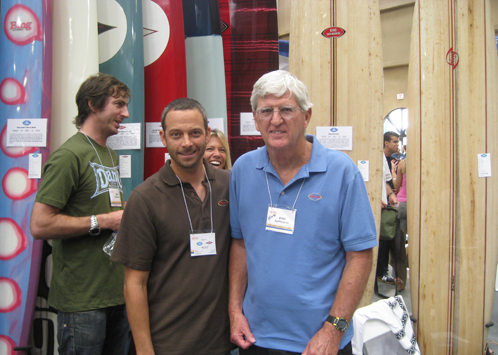 Matt Calvani is the head shaper for Bing Surfboards, located in Gardenia, California. Matt has a unique outlook on surfing due to his pedigree in the surf industry. Starting as an airbrusher in the mid 1980s Matt has shaped for well known names such as Becker and Spyde. He had a natural talent for shaping traditional longboards while also seeing the industry from a shortboarder's perspective. As a result, Matt's shapes are designed to push your surfing while helping you follow your true path. SurfScience spoke with Matt about surfboard progression and single fin shortboards.
Matt Calvani is the head shaper for Bing Surfboards, located in Gardenia, California. Matt has a unique outlook on surfing due to his pedigree in the surf industry. Starting as an airbrusher in the mid 1980s Matt has shaped for well known names such as Becker and Spyde. He had a natural talent for shaping traditional longboards while also seeing the industry from a shortboarder's perspective. As a result, Matt's shapes are designed to push your surfing while helping you follow your true path. SurfScience spoke with Matt about surfboard progression and single fin shortboards.
SurfScience: Can you give us an idea of your shaping background and your philosophy on surfboard building?
Matt Calvani: I have a shortboard background. I started riding longboards and was really intrigued by traditional single fin older style of surfing…Using the whole board from nose to tail, learning how to nose ride, and turn it properly, smoothly, gracefully. I was attracted to the aesthetics of surfing, the beauty of it. I wasn’t really interested in the aggressive style of longboarding. I didn’t think it fit. It fit the shortboarding world.
Coming from that, I’m into the traditional board variations of single fins. My shorter boards are retro style, but very aggressive. A tri-fin surfer might think it looks really weird, but it rides like a modern surfboard. I have an extreme way of looking at shaping, but my shaping reflects my own surfing philosophy and my own design philosophy.
I think longboarding and shortboarding are separate. Since I’m a shortboarder I don’t like to mix the two. I like to learn to ride them properly. It takes a long time to do. It’s a lifetime of learning. It’s really hard to go from shortboarding to longboarding and learn to ride them properly, in my mind.
SS: What is one of your favorite design characteristics of your surfboards here today?
MC: I like the simplicity of fewer fins. I love single fins and what you can do with just one fin, instead of everybody thinking you need three fins. I’m experimenting with shorter boards with single fins and realizing there is so much progression there. You can get So much speed and they can be so high-performance. I’m breaking down my own ideas, that the tri-fin needs to be the dominant board in the lineup. There is room for growth in the traditional shapes. There is a lot to learn.
SS: What do you think about surfboard progression and the industry in general?
MC: I like the idea that people are using old designs and putting refined elements into them and making them more functional. It makes the average guy able to ride a shorter board or a longer board. It’s so open right now. It’s so extreme that now you even have alaias. It’s great because now it opens everyone’s minds to different possibilities. For a long time everybody was stuck on tri fins. No one rode anything else. It left a whole generation of surfers who learning on equipment possibly not right for them.
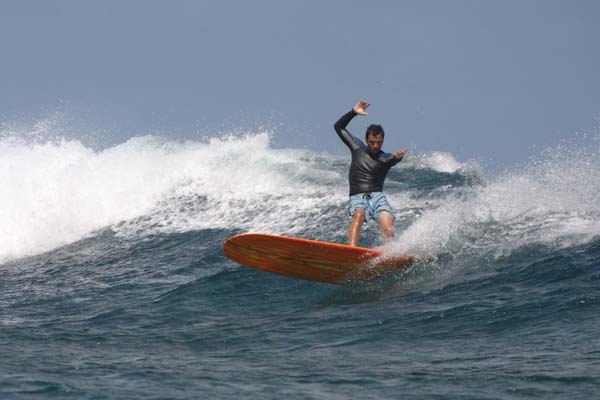 SS: What recommendations do you have for finding the perfect surfboard?
SS: What recommendations do you have for finding the perfect surfboard?
MC: It’s relevant to where you want to be in your surfing. If you’re an aggressive person who wants to shortboard, you start on something a little shorter, like an eight foot egg. You don’t want to go too short, but it depends on what direction you want to go. If you like the aesthetics of a traditional board, then you get on a nine footer and start with that. There are some people who want to learn to ride both and that’s long road because there is a totally different approach to both techniques.
SS: What are some of the common misconceptions about surfboard design?
MC: Some materials being used that aren’t really better. Some applications of epoxy/EPS that work really well for SUP, but I don’t really like it in the shortboard or longboard world because its really corky and it still breaks. They’re selling it to the public like it’s going to takeout all polyester, handmade surfboards, but in actually it is limited. It died in the 60s and it’s dying off again. People are realizing they don’t work as well. But there is an application for it. When you have a SUP that is really big and heavy and wide you want it light. So every material and manufacturing method has its place.
I make surfboards the traditional way, the oldest way, and it seems to be the cheapest and most versatile way. You can change designs quickly. You get an idea, hand shape the board, glass it, and ride it three days later. In contrast, the molding process is $15k-$20K to make that mold, to make one board overseas. They have to mass market it to make money. They need to sell volume to justify the costs.
Everybody wants to be unique. Twenty years ago, everyone in this room would have an airbrushed, three fin, swallow tail or squash tail 6’2”. Now it’s functional art. Colorwork is important to people. I have to be cutting edge, but I do a lot of research before I set out a board in the market to make sure it works. A lot of these boards in here get people intrigued because they’re extreme, but it takes a lot of talent to ride some of them. The shape may not be doing you any good. I’ve been surfing a long time and still struggle with surfboards I know will be difficult to ride.
One board may only work in a specific condition. I try to make boards that work for various conditions, for the average person. Some I make are a little more advanced. All of it is relevant to size. Some boards are really hard to ride short, but when you go longer they become easy to ride. The most important thing for a beginner or intermediate is what you’ve been riding and where you want to go and doing small steps to push you in that direction. Let’s say you ride a nine foot board. If you really want to ride an old style noserider, don’t go to a ten foot surfboard. Go to a 9’4” and then work your way up. You will be going backwards if you go too extreme. On the other hand, if you ride too short a board you’re gonna get stuck for years not progressing because you’re on too short a board. You gradually evolve.
Most of the time you’re paddling or sitting, not surfing. Your skill and your wave knowledge is more important in getting into the waves and negotiating the crowds. It’s almost more important than how the board performs. If you can get into the wave, you’re going to have more fun because you’re getting more waves. But it’s also not about just catching as many waves as possible. It’s progressing while being efficient at the same time. That’s my job. Get you on the board that will get you the most waves and help you have the most fun.
Don’t be scared to be who you want to be as a surfer. Don’t let others push you in a direction that you don’t want to go in. Really go with what you believe in. Go with what in your heart you feel is right. You’ll be happy. Don’t let anyone stop you.


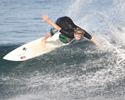



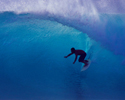


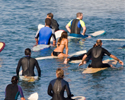

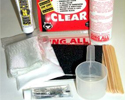



0 Comments